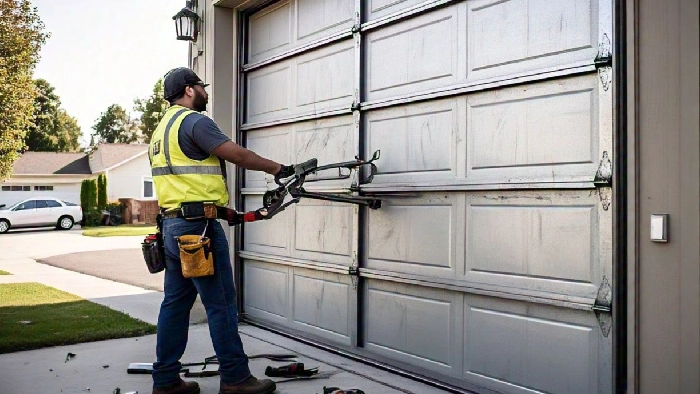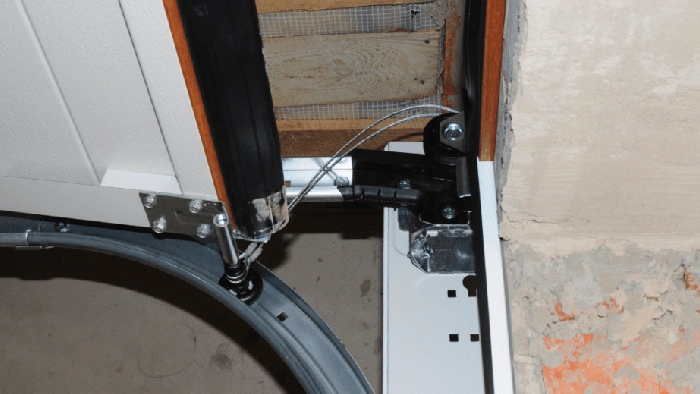Introduction
When it comes to home maintenance, few things are as critical yet often overlooked as your garage door. It’s the unsung hero of daily life, providing security and convenience. But what happens when that trusty door begins to fail? Whether it’s a creaking sound or a sudden inability to open, one of the most common culprits is the garage door spring. In this comprehensive guide, we’ll dive deep into navigating garage door spring replacement costs in Los Angeles with a focus on whether you should tackle it yourself or call in the pros.
Understanding Garage Door Springs
What Are Garage Door Springs?
Garage door springs are an essential component of your garage door system. They counterbalance the weight of the door, making it easy to open and close. There are two types: torsion springs and extension springs, each with its own mechanism and cost implications.
Why Do Springs Fail?
Springs wear out over time due to repeated use. Factors like weather conditions and rust can accelerate their deterioration. Knowing when to replace them is crucial for maintaining your garage door's functionality.

Navigating Garage Door Spring Replacement Costs in Los Angeles: DIY vs. Professional Options
Overview of Replacement Costs
The cost of replacing garage door springs can vary widely depending on whether you choose to do it yourself or hire a professional service. Generally speaking, DIY replacements could save you some cash upfront but may come with hidden costs like injuries or additional repairs if something goes wrong.
Cost Breakdown for DIY Replacement
Tools Needed- Wrenches Pliers Safety glasses Torque wrench
- Torsion springs: $30-$100 per spring Extension springs: $20-$50 per spring
- Gloves ($5-$15) Ladder (if you don’t already have one) ($50-$150)
Cost Breakdown for Professional Replacement
Labor Costs- Average hourly rate: $75-$150 Typical job duration: 1-2 hours
- Torsion springs: $30-$100 each Extension springs: $20-$50 each Additional parts (if needed): rollers, cables ($20-$100)
DIY Garage Door Spring Replacement Steps
Gather Your Tools
Before you start, make sure you have all necessary tools at hand; you'll want to avoid any trips back and forth from the hardware store.

Safety First!
Make sure your garage is clear and well-lit. Wear safety goggles and gloves to protect yourself from flying debris or sharp edges.
Removing Old Springs
- Disconnect the power source. Use wrenches to carefully unwind or detach old springs. Make sure everything is under control; these springs can be under significant tension!
Installing New Springs
- Follow the manufacturer’s instructions closely. Securely attach new springs using appropriate tools. Reconnect power once everything is back in place.
Professional Garage Door Spring Replacement Process
Initial Consultation
Most professionals will offer an initial consultation where they assess your garage door's condition and provide a quote based on what needs fixing.
Assessment by Professionals
They'll take careful measurements and check other components like cables and rollers that might also need attention while they're there.
Installation Process
Once you agree on costs:
The technician will remove old springs safely. They’ll install new ones precisely according to specifications. Finally, they’ll test your garage door multiple times before leaving.Pros and Cons of DIY Garage Door Spring Replacement
Pros:
- Cost Savings: Save on labor costs. Flexibility: Work on your schedule instead of accommodating someone else’s timetable.
Cons:
- Risk of Injury: Handling high-tension springs can lead to serious injuries if not done correctly. Time Investment: You may spend more time than expected figuring things out if you're not experienced.
Pros and Cons of Hiring Professionals
Pros:
- Expertise: Trained technicians know exactly what they're doing. Time Efficiency: They’ll get it done faster than an inexperienced person could.
Cons:
- Costly: Hiring a pro can be expensive, especially with emergency calls after hours.
Common Questions About Garage Door Spring Replacement
1. How long do garage door springs last?
Typically, torsion springs last about 10,000 cycles—roughly 7 years—while extension garage door spring repair cost springs may last up to 6 years depending on usage frequency.
2. Can I replace just one spring?
Yes! However, it's generally recommended to replace both at the same time for balanced operation unless one was recently replaced.
3. What are signs that my spring needs replacing?
Look for signs such as difficulty opening/closing the door, unusual noises during operation, or visible wear or damage on the spring itself.
4. Is it possible to fix a broken spring temporarily?
While it's not advisable as a long-term solution, some people use clamps or tape as temporary fixes until they can get a proper replacement done.

5. What type of spring should I buy?
It depends on your current setup—check which type you have (torsion vs extension) before purchasing new ones for proper compatibility.
6. Do I need a permit for replacing garage door springs in LA?
Generally no permit is needed specifically for spring replacement; however, check local regulations just in case some areas might require them based on modifications made.
Conclusion
Navigating garage door spring replacement costs in Los Angeles doesn’t have to be daunting! Whether you're considering doing it yourself or hiring professionals, understanding what goes into both options empowers you to make informed decisions tailored around your budget and expertise level.
So next time that pesky squeak echoes through your neighborhood or that heavy lift feels too burdensome—remember that taking care of those garage doors can prolong their life while keeping everything inside safe! Don’t hesitate; now's the perfect time to assess whether those springs are still up for the job!